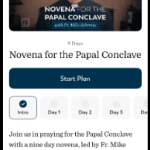This is what I’ve learned, after two days of Twitter:
To start with, I am currently “following” fewer than a dozen people, but one of them is instapundit/Glen Reynolds. And it’s not so much that he tweets constantly, but he retweets incessantly. How to you separate the wheat from the chaff? Twitter has pestered me to follow more people, but how do you manage more?
The other disappointment is this: I figured that 140-character tweets wouldn’t really provide any meaningful ideas or information, and that the key to twitter was more the links that people share. But too many of these tweets are just cryptic, like you need to be in the in crowd to know what the references are, and whether the link is worth clicking on — and, of course, it’s not possible to click on every link!
It’s interesting to see how many followers some major pundits have:
Charles Krauthammer (who has been writing so long that I think I remember his op-ed pieces from when I started reading the paper as a kid): 439,000.
Jake Tapper: 341,000.
National Review seems to exist as NRO (96,200) and NROCorner (62,700), and I’m not clear what the difference is.
Instapundit: 31,800.
Megan McArdle: 21,900.
I was surprised that Instapundit has comparatively few, and Krauthammer (who doesn’t tweet very much) has so many. Really: Krauthammer has tweeted 267 times, and Instapundit 232,000 times.
That being said: I think part of the trick of Twitter, for an aspiring blogger, is to use it to promote blog posts — that is, not so much by sending posts out into the nothingness of the Twitterverse, but by tweeting things directly to a big-audience blogger who may be interested. At least, I’m fresh off my first such success: Megan McArdle retweeted my tweek and large numbers of her readers looked at my blog. Well, OK, “large” is relative, but compared to my usual number of readers, it was a nice boost. How often this works, and how wide the pool of potential retweeting bloggers is, I don’t know.
I also see how Twitter is attempting to earn money, via ads that appear in the feed. Surprisingly, this isn’t too bothersome, compared to facebook’s ads, which seem to have grown lately. Whether Twitter isn’t as aggressive as facebook because they don’t want to alienate users, or because Twitter is meant to be accessed via smartphone (which I don’t have, except for the Blackberry for work), and more ads wouldn’t work in that format, I don’t know.















